Discover Morocco's Breathtaking Hidden Treasures

If a person has visited New York City, have they really seen the United States of America? A trip to Rome certainly doesn’t mean someone knows what the whole of Italy is like. Likewise, Marrakech, while vibrant, exotic, and exciting, is not all there is to Morocco. There are lists of reasons to go—the new and spectacular Musée Yves Saint Laurent Marrakech is one, and fantasy-fueling hotels such as the minimalist-Moroccan Amanjena, ornately maximalist and palatial Royal Mansour and La Mamounia, and elegant-African Villa des Orangers are others. Just don’t stop there. Morocco, as anyone who’s experienced a good part of it can attest, is an exciting and inspiring study in contrasts.
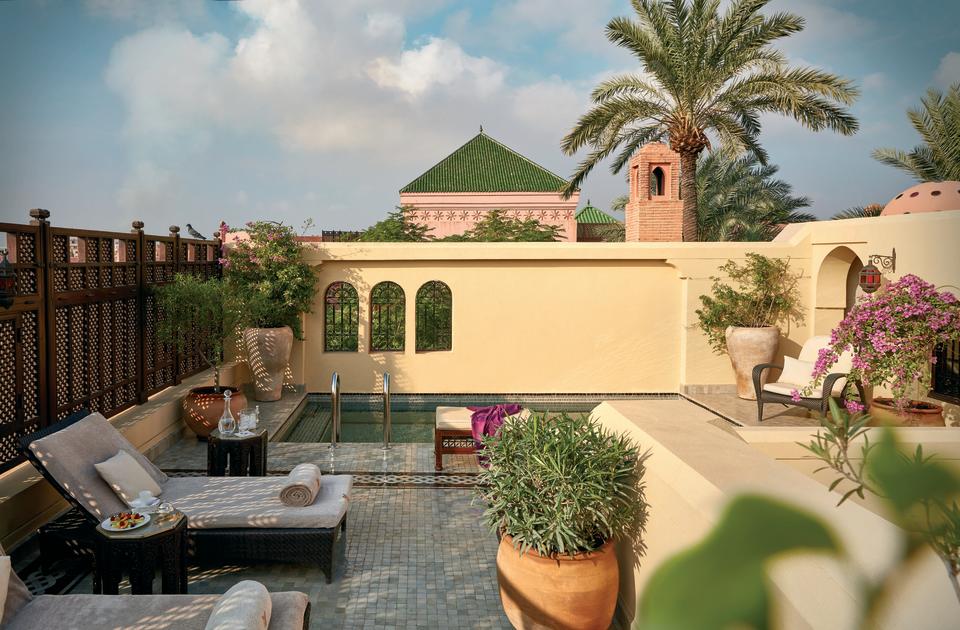
All in all, travelers are getting the hint, as tourism to northern Morocco is up and expected to continue rising. For good reason. Fes, the capital until 1912, gives the opportunity for total immersion into an authentic part of Morocco that feels much more traditional than Marrakech. The car-free medina—the world’s largest and oldest—is overwhelming, mostly in a good way (the barrage of smells can be intense). Women still deliver their bread each day to the neighborhood bakery, long-limbed cats peek through doorways, and mules loaded with deliveries clomp down narrow passageways that locals claim as streets.
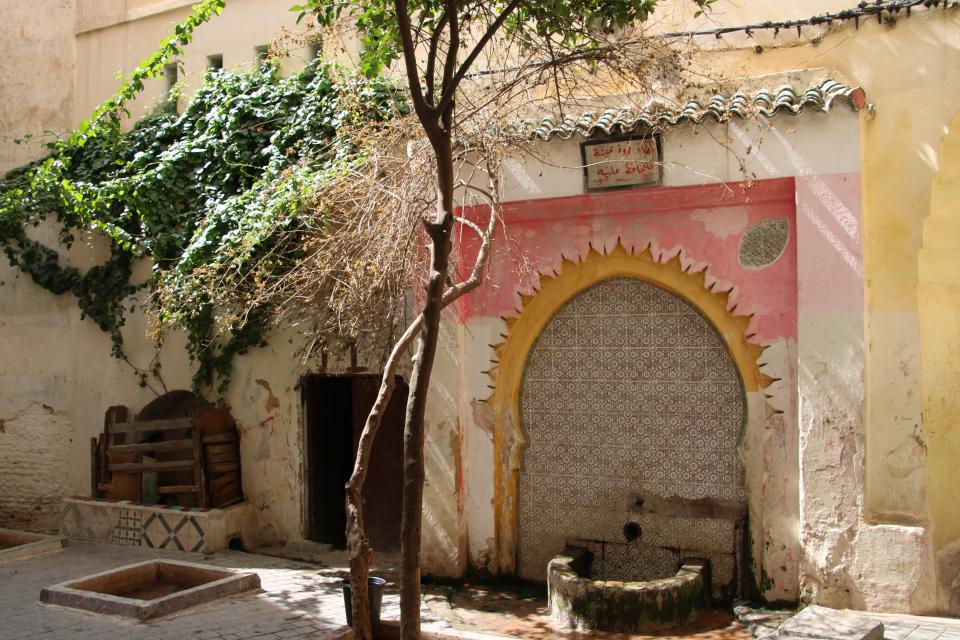
The only way to make sense of it all, plus gain context and fascinating details about the culture and history, is with a walking tour; the experiential travel concierge Scott Dunn is the go-to in these matters. Tours can take you through Islamic gardens to important architectural wonders, for example; or give peeks into hidden parts of the maze-like medina and set you on a trail to taste street treats (think surprisingly incredible boiled sheep’s head and fresh, juicy prickly pear), spins on Moroccan mint tea, and dozens of honeys that each have a particular therapeutic use.
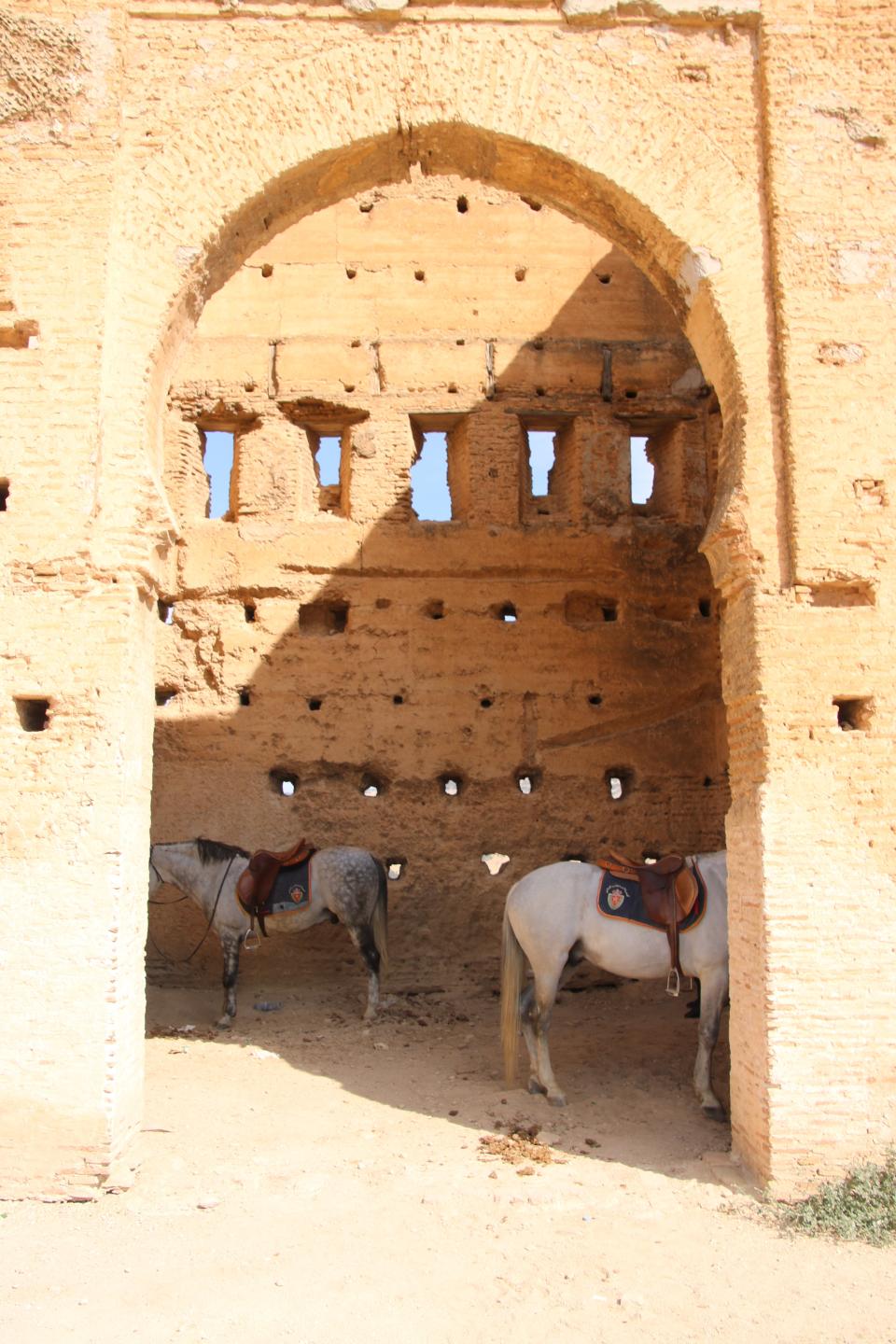
It should be required to stay at a riad (the Moroccan term for a house with gardens) inside the medina, many of which have been lovingly restored into intimate boutique hotels. There are handfuls of particularly pristine and transportive ones to choose from, including the Relais & Chateaux property Riad Fes, with its peaceful pool and incredibly chic wine bar, and Palais Amani, the regally outfitted 17th-century bolt-hole of stained glass and Technicolor tile work whose ceilings are sky-high and whose rooftop is being transformed for open-air cooking classes and dining. Karawan Riad opened two years ago after a painstaking ten-year restoration and renovation that comprises intricate moucharaby paneling and a lounge wallpapered with rich red rugs. The food at all these riads is mouthwatering, but it’s an adventure in itself to venture—with a porter to guide you—into the medina after dark to savor the six-course prix fixe menus at Nur, open in September for its second “season” of fine modern-Moroccan-with-a-Mexican-twist cuisine, made from ingredients purchased each morning in the market and formed into innovative dishes later (they’re closed in summer).
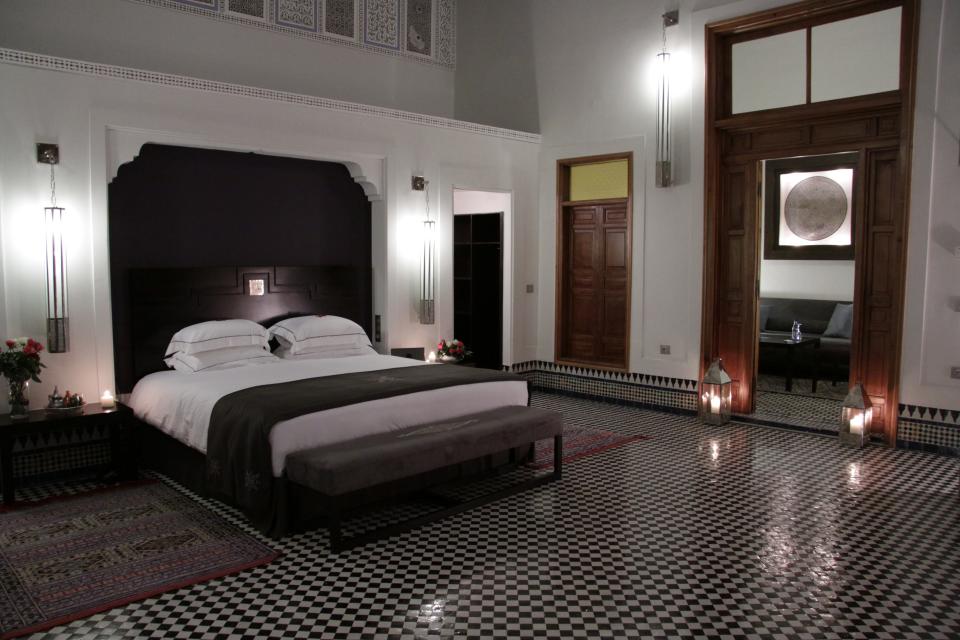
From there a three-hour drive gets you to Chefchaouen, the famed Blue City that is even more dreamy in reality than in photographs. Imagine if there was fresh snowfall in Oia, Santorini, in every shade of periwinkle, indigo, sky, and powder blue. There, you can almost feel sustained off the visual stimulation without food, but when hunger sets in the best (casual) meal can be had at Bab Ssour, while prime views of the stacked blue city are had from the top of Lina Ryad, the prettiest riad in town. (Surprise: Morocco also has beautifully preserved Roman ruins, which can be seen on a stop at Volubilis, and complemented with a picnic of Roman dishes organized by Scott Dunn.)
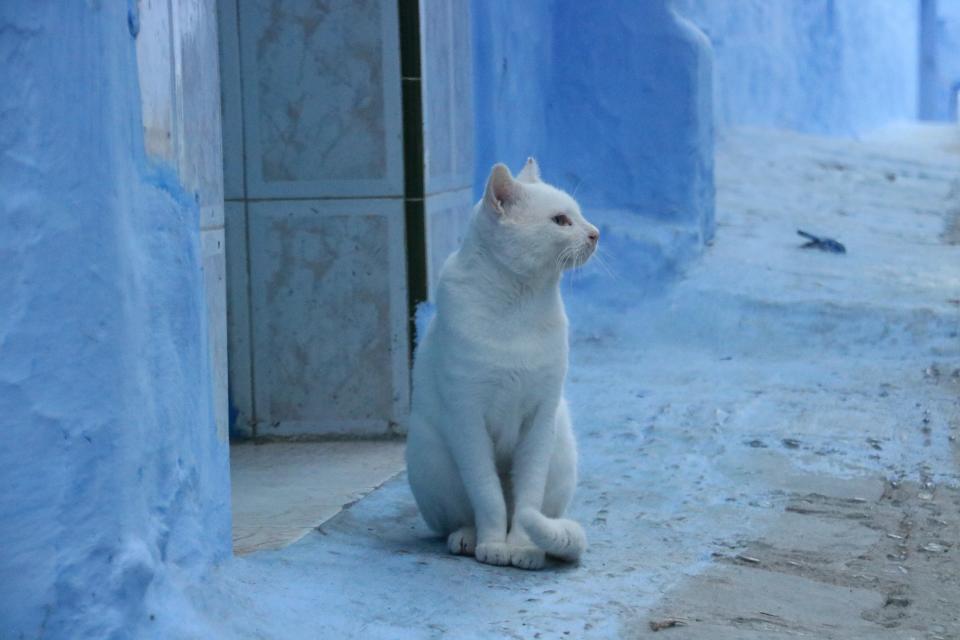
The other blue-infused city, though not in as obvious a way, is Essaouira, a couple hours from Marrakech on the sea. The fishing village with strong trade winds—a favorite of windsurfers—charms just about everyone who walks inside its walls containing narrow yet vividly adorned cobalt-trimmed alleyways, camel-studded beaches, excellent (and less haggle-riddled) shopping, and food. La Table by Madada has the best Moroccan cuisine in town, while expats who fell in love with Essaouira have opened impeccable French (Umia) and Italian (Silvestro) spots in the vicinity. Where the shop owners in Marrakech are aggressive, sometimes abrasive, here they’re exceedingly mellow, perhaps softened by the sea air. Berber rugs and excessive amounts of vintage jewelry can be found, thanks to many selling wares retrieved from the desert and mountains, but if you prefer the source, venture to the High Atlas Mountains, which begin just 45 minutes outside Marrakech (the opposite direction).
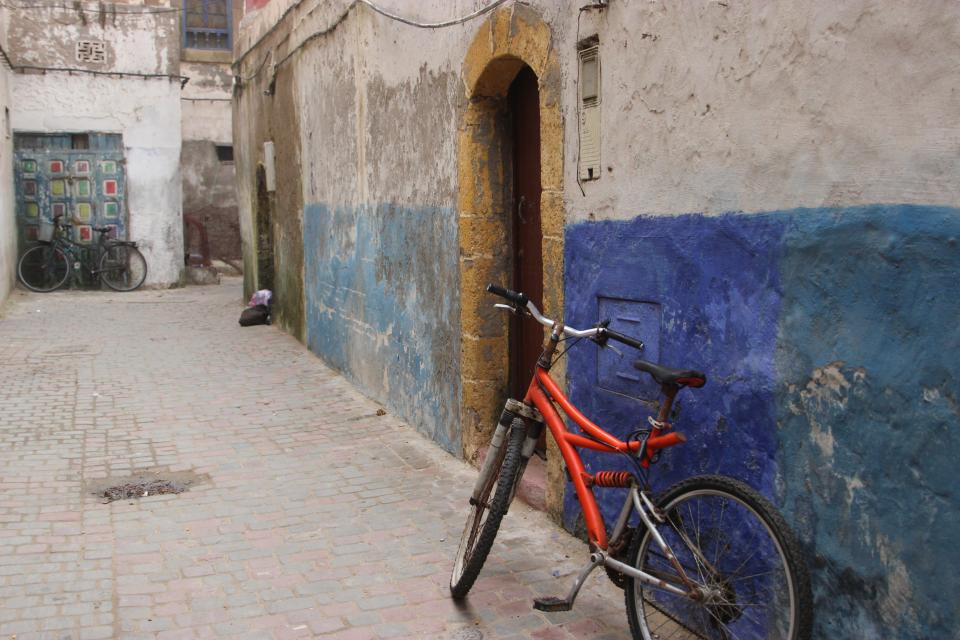
There, Sir Richard Branson’s Kasbah Tamadot is a Moroccan Eden in the most bucolic of settings, with the many layers of mountains silhouetted behind the aquamarine swimming pool, cushions for lounging in the grass, and even lantern-studded Berber tents alongside vividly hued rooms and suites outfitted with spectacular tubs and traditional leather babouches (slippers). En route (in the fall), you might spot mules carting boxes of freshly picked apples, and then savor a local-apple-based menu on the rooftop with sparkling stars above. Hiking and visits to the Eve Branson Foundation craft houses reveal more about the simple and honest way of life here.
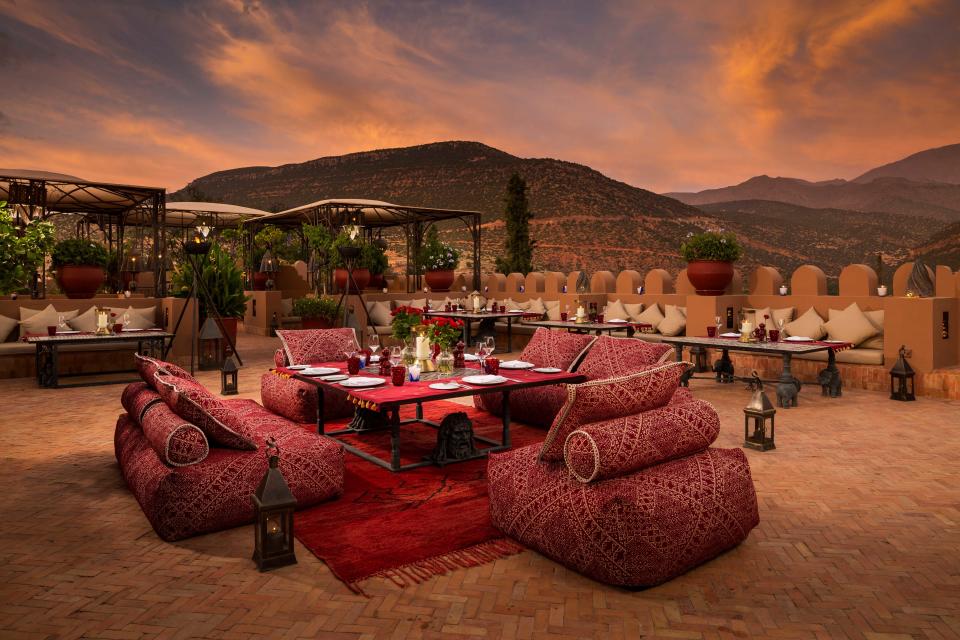
Winding around and over and between those very mountains is the hard-won way to the Sahara desert and Zagora, the gateway town close to Tamegroute, where green pottery has been made by seven Berber families for hundreds of years. It’s not a journey for the faint of stomach, but once one has sunk a foot into the rusty sand of the dunes three hours from “civilization,” marked with slithering striations from the wind, you’ll forget all about the long trip. It may seem like the touristy thing to do to make your final approach into a place like Azalai Desert Camp by camel, but do it.
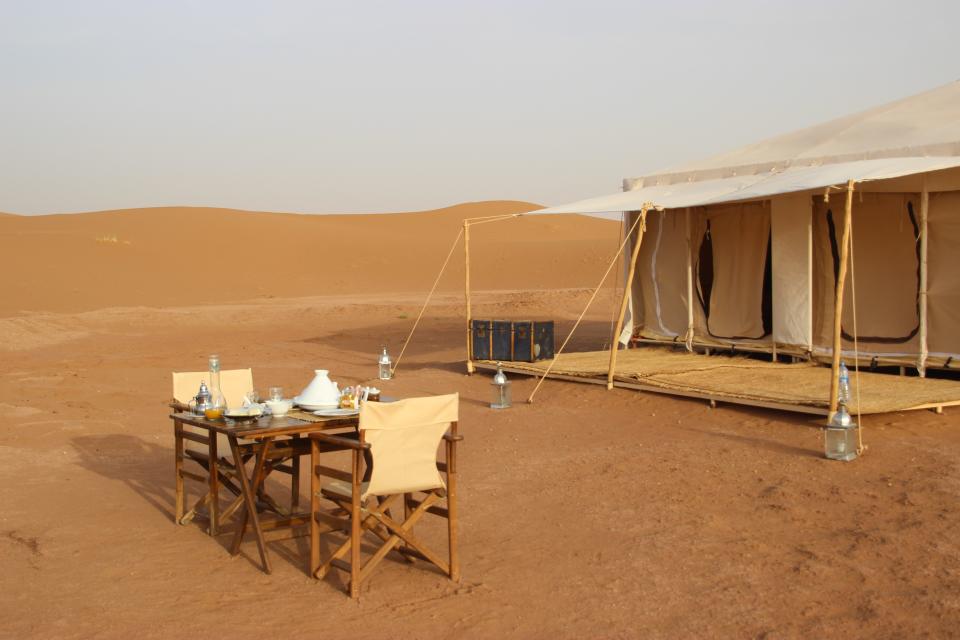
The nomads who live in these parts do, too. Tour companies offer desert day trips from Marrakech, which perhaps with little time could suffice, but the landscapes and feeling of being almost completely alone, in the middle of nowhere, surrounded by billions of grains of sand—and the stillness and starry skies that accompany it—is like nothing you can feel anywhere close to a city. Only with excursions to several of these otherworldly destinations—and interactions with the generous, high-spirited people in them—do you start to feel you’ve seen Morocco.

